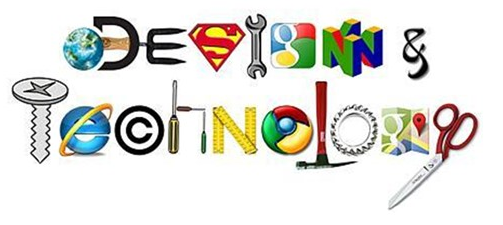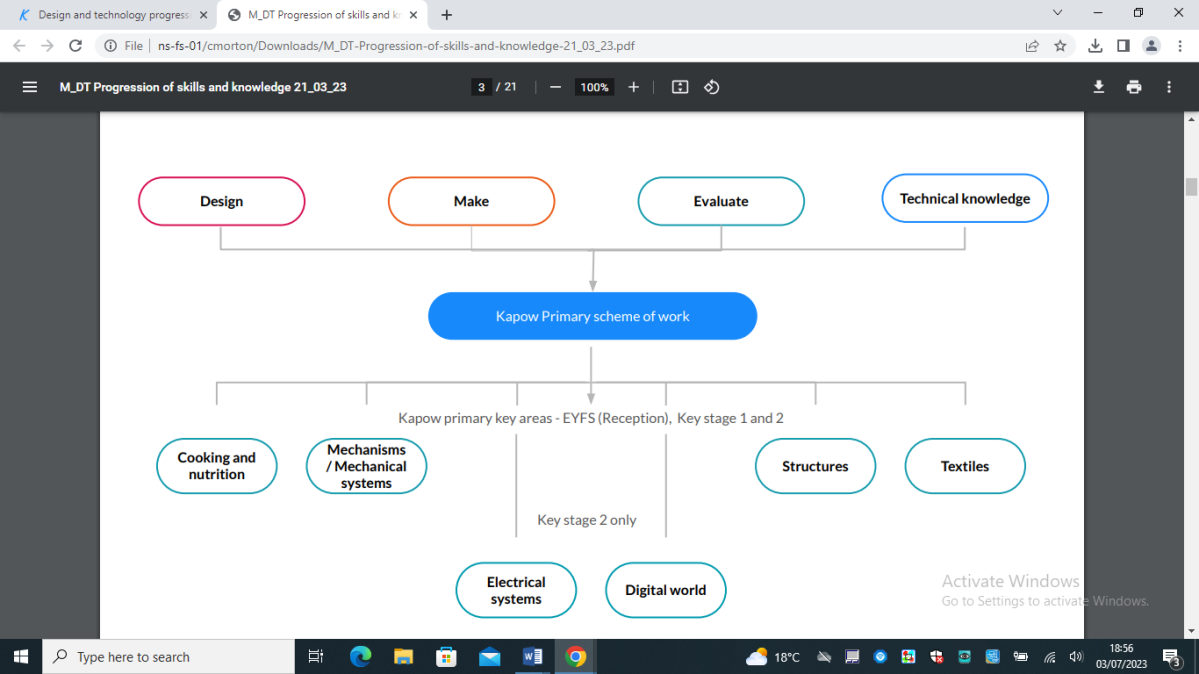“Design is not just what it looks like and feels like. Design is how it works.” – Steve Jobs
Subject Leader: Miss J Brotherhood
Rationale: Purpose of Study (taken from the National Curriculum)
Design and technology is an inspiring, rigorous and practical subject. Using creativity and imagination, pupils design and make products that solve real and relevant problems within a variety of contexts, considering their own and others’ needs, wants and values. They acquire a broad range of subject knowledge and draw on disciplines such as mathematics, science, engineering, computing and art. Pupils learn how to take risks, becoming resourceful, innovative, enterprising and capable citizens. Through the evaluation of past and present design and technology, they develop a critical understanding of its impact on daily life and the wider world. High-quality design and technology education makes an essential contribution to the creativity, culture, wealth and well-being of the nation.
Intent
Design and Technology is an inspiring, rigorous and practical subject. It encourages children to learn to think and intervene creatively to solve problems both as individuals and as members of a team. At Nanpean School, we encourage children to use their creativity and imagination, to design and make products that solve real and relevant problems within a variety of contexts, considering their own and others’ needs, wants and values. The children are also given opportunities to reflect upon and evaluate past and present Design Technology, its uses and its effectiveness, and are encouraged to become innovators and risk-takers. We foster links between design in the community which gives children career ideas to aspire to and this also builds a love of learning.
Implementation
At Nanpean School we plan a progressive curriculum, with use of the Kapow scheme to support teaching and learning, that allows children to learn and build on skills mastered in previous years. This enables children to work through carefully planned units of study, master practical skills, design, make, evaluate and improve their final piece.
All teaching of DT follows the design, make and evaluate cycle. Each stage is rooted in technical knowledge. The design process is rooted in real life, relevant contexts to give meaning to learning. While making, children are given choice and a range of tools to choose from. Children are able to evaluate their own products against a design criteria. Each of these steps are rooted in technical knowledge and vocabulary.
Impact
Our Design and Technology Curriculum is of high quality, is well thought out and progressive in terms of children developing knowledge and skills. We ensure our children develop the creative, technical and practical expertise needed to perform everyday tasks confidently and to participate successfully in an increasingly technological world.
Feedback from a Subject Review and Pupil Conferencing during the 2023-24 academic year has shown:
- Children from all backgrounds enjoy and value Design and Technology lessons and learning. They enjoy the process of creating work as well viewing their finished product and appraising these.
- Children understand uses and properties of materials and how resources can be used to ‘process’ some materials, shaping them (for example).
- Children understand the principles of healthy eating, including food groups, cooking equipment and recipes.
- Children are beginning to appreciate key designers, architects and engineers who have pioneered designs that impact our world.
- Children are becoming more confident at comparing their own work with others’, contributing to evaluations which result in further developments for themselves and other children.
- Evidence of work (scrutiny of work / books) and lesson visits in 2023-24 shows high presentational standards and appropriate curriculum coverage, with interdisciplinary links made between subjects, for example Year 2 unit on structures (Autumn) links to a text covered in English, Year 3/4 unit on textiles in the Spring Term links to their History unit about Ancient Egypt.
SEND
Our Design and Technology Curriculum is ambitious for all pupils. The emphasis on practical activities and the use of a range of equipment and resources means that all children can take an active part in lessons and we believe that children are likely to learn more effectively as a result of the practical approach. We also consider ways of minimising and reducing barriers to learning so that all pupils are included in lessons and achieve their potential. The Curriculum Adaptations document on our website (see ‘Key Information’ section) includes ways that learning is adapted to support children, with this including general adaptations as well as highlighting some that are specific to the subject of Design and Technology. An example of this is how children with sensory issues may be provided with gloves (if appropriate) to support their handling of certain materials or equipment.
Displays are accessible, informative and engaging, and these showcase work and/or provide relevant information and resources for support.
During lessons, children are also made aware of any health and safety issues relating to the use of equipment so children are more aware of possible dangers.
British Values
At Nanpean School, British Values are embedded into the Design and Technology Curriculum, where appropriate, while we also learn about British Values at other specific times, such as during Collective Worship opportunities (Assemblies).
During lessons, children complete work with equipment, for example, and this is used to discuss the rule of law to ensure safe use of equipment. Individual Liberty enables children the freedom to express themselves through the design process and in the creation of products. By looking at the achievements of significant designers, engineers or architects, children develop an awareness of how they have influenced and shaped different times (historically) and cultures. This includes an appreciation of their own and others’ work, through supportive and constructive comments when evaluating, and links to the British Values of Tolerance and Mutual Respect. Alongside this, children are encouraged to take the views of others into account and to compromise, when necessary. Again, this teaches them about Mutual Respect and Tolerance. Teaching children to respect and value diversity is encouraged in day to day teaching and learning which helps to prepare children for life in modern Britain, through showing respect for different viewpoints and ideas as well as in the ability to work effectively together.
SMSC
Much of our Design and Technology Curriculum enables links to cultural learning, through our children developing an awareness of how designers, engineers or architects have influenced and shaped cultures and (historical) times.
How you can help your child at home
Why not involve your child in DIY projects at home? Why not plan to fix or make something as a family? Upcycling can be very satisfying as well as cost effective for families.
Also, don’t be afraid to take old products apart, to see and help your child understand how they work.
Why not create recipes, prepare and cook food together? When doing so, consider the importance of a healthy balanced diet, as well as general hygiene when preparing and cooking food. Is there a favourite family recipe that you and your child could create together? This would also link to skills in other Curriculum areas, such as measuring in Maths.
The following websites could also be used to support your child:
www.bbcgoodfood.com/recipes/collection/kids-cooking
www.pinterest.co.uk/ldrew77/dt-projects/
www.theschoolrun.com/5-at-home-design-and-technology-projects-for-primary-children



